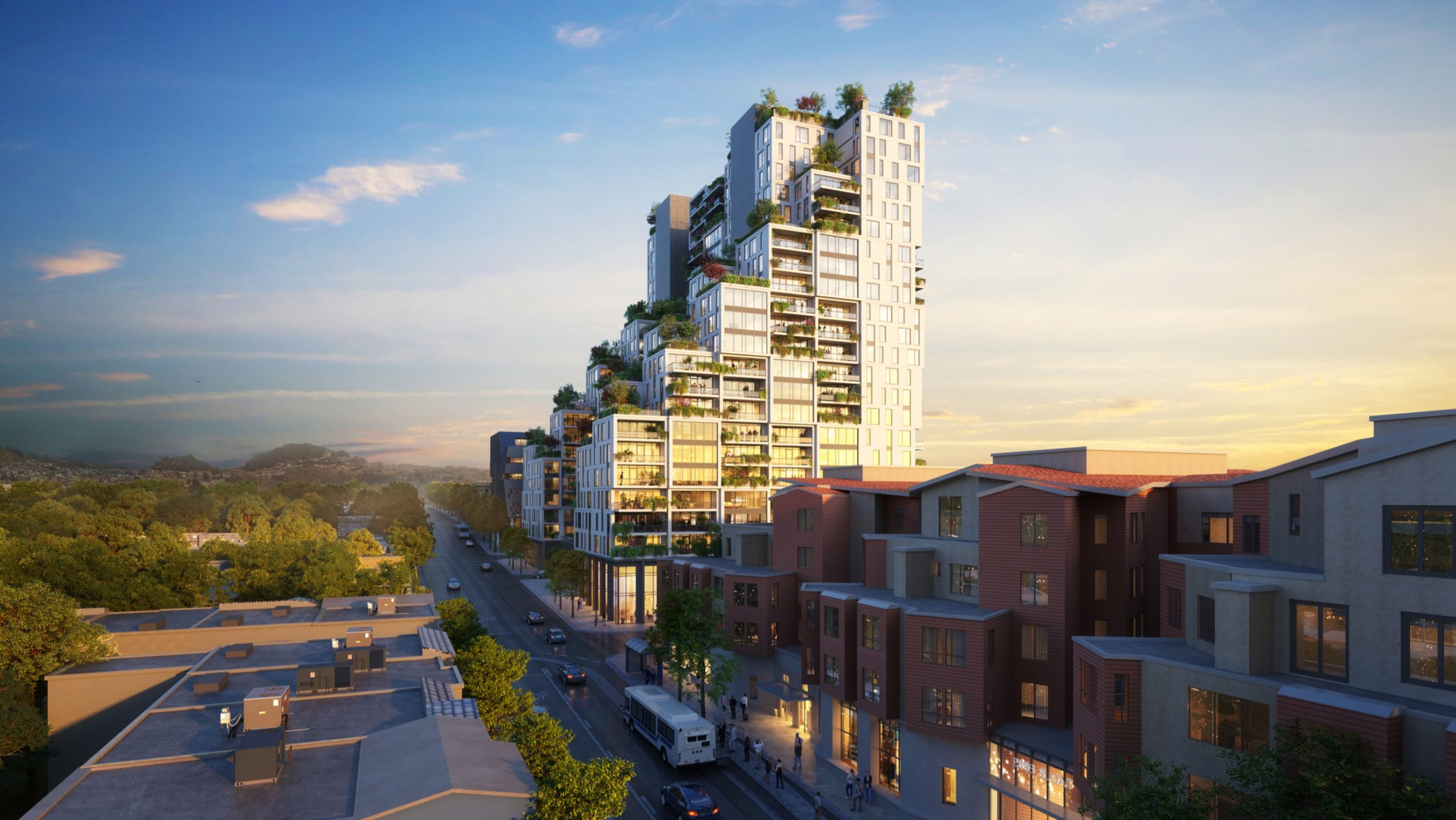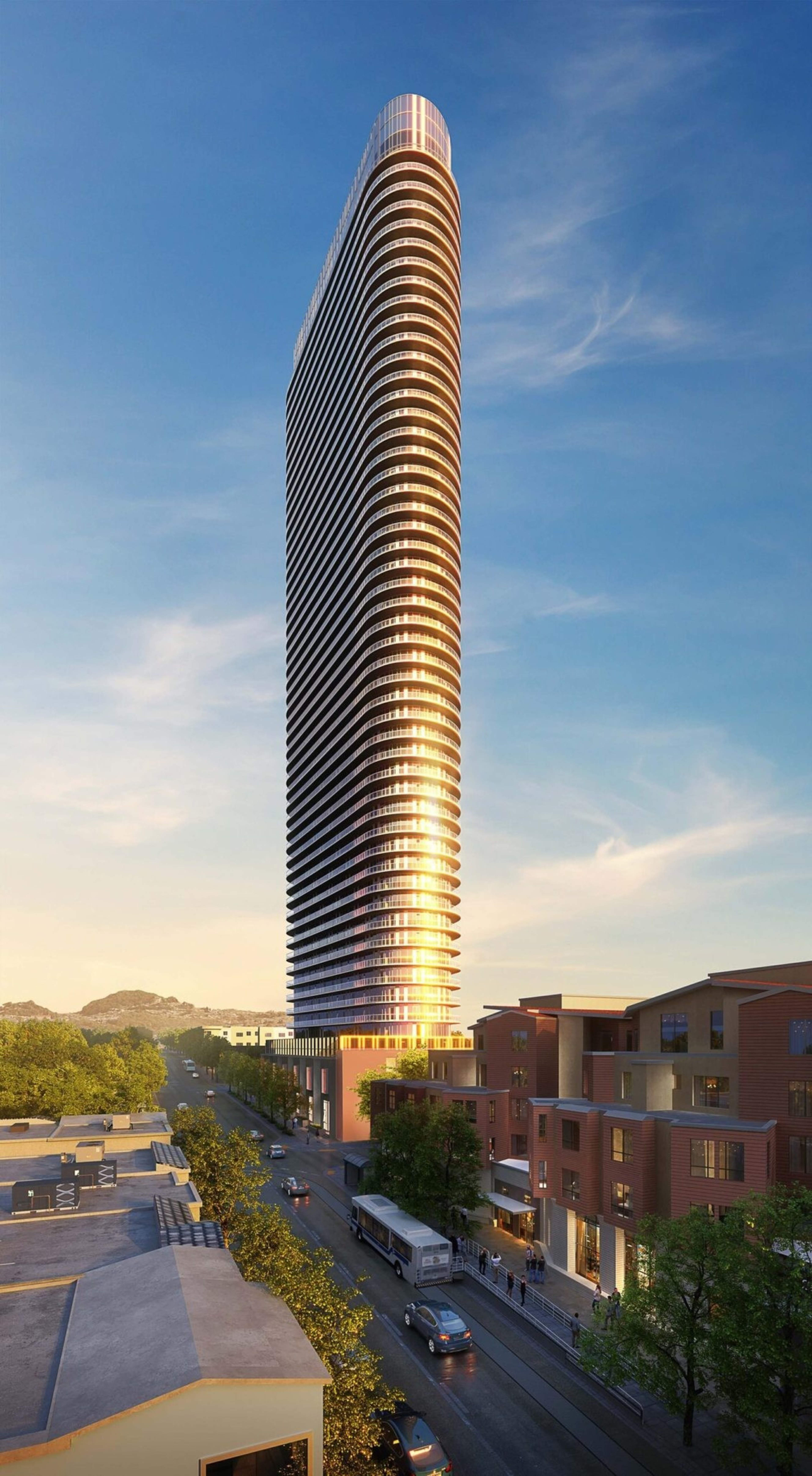It has been two years since John and Raelynn Hickey pitched their concept for a skyscraper in the Outer Sunset, and they have failed to get any version of the project approved.
First, the developer couple wanted to tap into a state density bonus law (SB 330) to build a 50-story tower at 2700 Sloat Blvd., but it was rejected by city planners. Then, they pivoted to a version half the size, hoping a different state law would facilitate approval. That effort was knocked back last month.
Now they’re filing for bankruptcy.
In documents filed last week in Nevada Bankruptcy Court, Raelynn Hickey — who is CEO of the Reno-based entity that owns the property, 2700 Sloat Holding — declared that it requires debt relief in the range of $10 million to $50 million. Among the creditors are the company’s architects, Solomon Cordwell Buenz, and its land-use attorneys at Reuben, Junius & Rose.
It’s yet another chapter in a twisty saga that raised the hackles of Outer Sunset residents and pissed off nearly all corners of the city.
When the Hickeys unveiled their design for the tower in 2023, neighbors balked. Thousands of residents of the sleepy beachside neighborhood signed a petition in protest, and officials called the plans “categorically out of compliance with both state and local laws.”
Critics characterized the design as a “spite project” submitted in response to SF Planning’s rejection of an earlier, more modest, 12-story plan.
The skyscraper proposal was seized on by anti-development activists as an example of a project massively out of scope with the surrounding neighborhood, enabled by new housing legislation. Even developers traditionally aligned with building denser and taller housing denounced the project as unfeasible to pursue.
John Hickey has a checkered history. In 2004, he pitched plans for the largest residential towers in California, in San Francisco’s India Basin. Those failed to come to fruition after he was indicted and spent 97 months in prison in connection with a Ponzi scheme (opens in new tab) to develop land in Napa and Sonoma counties; he and a co-conspirator bilked more than 700 investors out of roughly $20 million, according to court records.
By filing for Chapter 11, Raelynn Hickey has left the door open for 2700 Sloat Holding to renegotiate terms with its lender, Loan Oak Fund, which moved to foreclose on the property this year after the Hickeys defaulted on a $10.2 million loan.
Once a debtor files for bankruptcy, the court puts a temporary stay on everything related to the property in question, meaning creditors cannot seize the asset. Last month, Loan Oak Fund attempted to auction off the property, but no buyer was found.
With the case now in bankruptcy court, the Hickeys have 45 days to publish a thorough accounting of their entity’s assets and liabilities, and another six months to propose a refinancing or organization restructuring plan to retain ownership of the property. They can also petition the court to oversee a separate auction in which they sell the property themselves.
Raelynn Hickey did not respond to a request for comment. She previously told the San Francisco Business Times that she intended to offload the property (opens in new tab) this year to a partnership of development organizations that convenes on a per-project basis. That deal was reportedly tied to the 2700 Sloat redevelopment getting entitled.
Once the couple provide a restructuring plan, Loan Oak can accept the terms or come up with its own strategy. Separately, it can move to have the case dismissed and move forward with foreclosure.
Either way, each action sets off another deadline and hearing that both sides would have to prepare for, said bankruptcy expert Adam Stein-Sapir of Pioneer Funding Group, who is not involved in the case.
“The U.S. bankruptcy system is very debtor-friendly,” Stein-Sapir said. “It is designed to give the debtor a breathing spell or help them buy time. But it is expensive for everybody to participate in.”

The Hickeys purchased the property beneath the Sloat Garden Center in 2020 for $8.5 million. The land had been owned by the family of David Straus, who was once dubbed the “Meanest Man in San Francisco (opens in new tab)” for his desire to tear down the historic Doggie Diner.
Shortly after buying the land, the Hickeys proposed demolishing the garden center to make way for a 589-foot-tall structure that would yield more than 700 apartments and 15,000 square feet of retail. To bypass the neighborhood’s height restrictions, the developers argued that the project qualified for SB 330, also known as the Builder’s Remedy, which restricts local jurisdictions from downsizing or delaying new housing.
The city rejected the proposal after determining that the developers had inaccurately interpreted the zoning laws. The Hickeys withdrew the application last year.
Since then, they have opted to pursue a revised project — this time with Housing America Partners and the San Francisco Housing Development Corporation — seeking approval for a two-tower, 22-story housing complex. Last month, city planners determined that it was also ineligible for streamlined approvals and a state density bonus.
